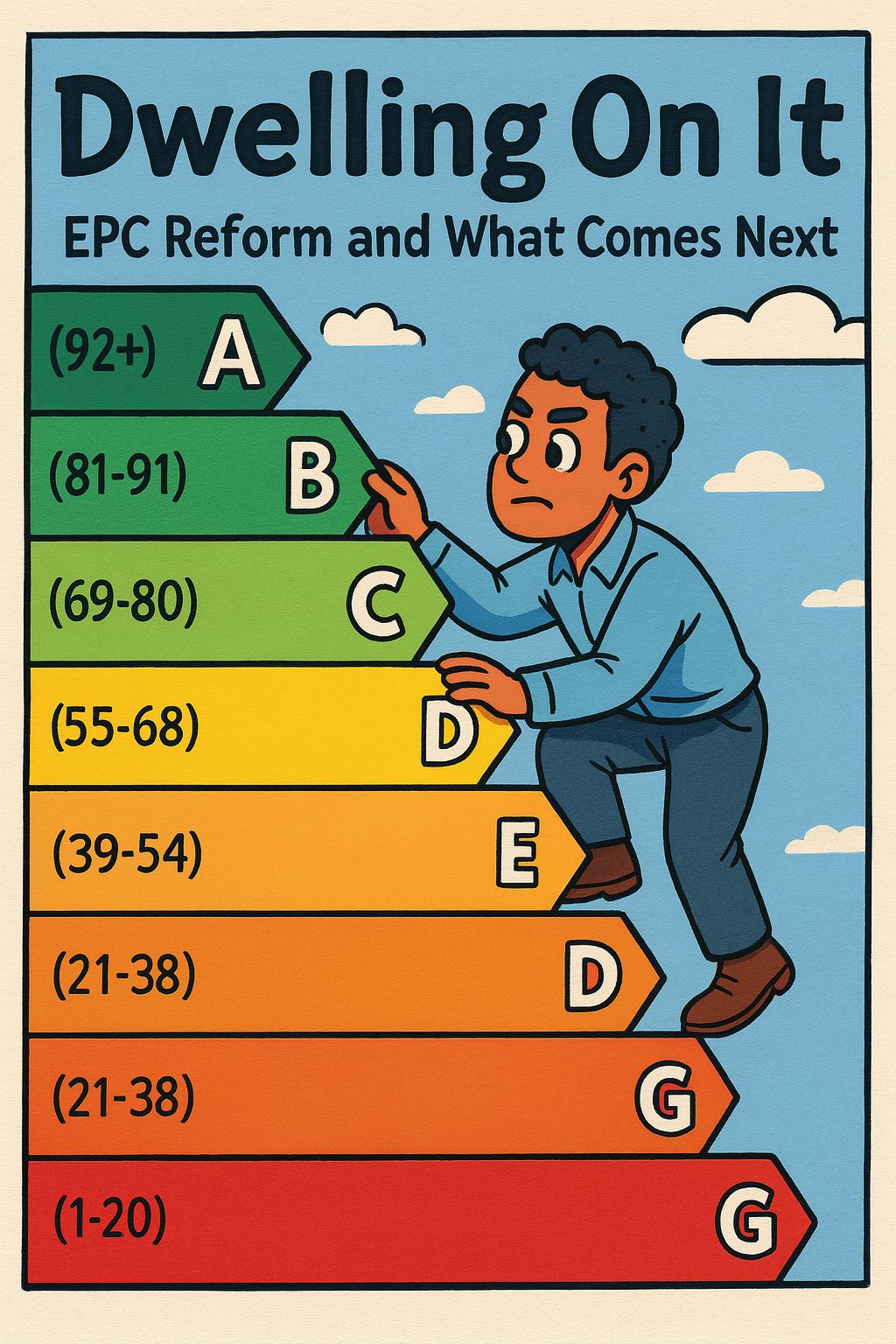- Dwelling On It
- Posts
- EPC Reform and What Comes Next
EPC Reform and What Comes Next
Inside the metrics, money, and market shifts reshaping how social landlords prepare for 2030

The landscape around Energy Performance Certificates is shifting fast. With fundamental changes to how EPCs are calculated, interpreted, and acted upon, housing providers are now facing a new generation of metrics, methodologies, and investment risks.
This isn’t just a compliance story. It’s a data story. One that will define retrofit strategy, funding access, and sector credibility over the coming decade. Here's what you need to know.
1. EPC Reform: A New Set of Metrics
The government is reshaping EPCs to reflect more than just estimated fuel costs. The reform introduces new performance indicators including a fabric performance metric, a heating system metric, and a smart readiness score. These aim to give a fuller picture of building efficiency.
The shift aligns with a “fabric first” approach, focusing on insulation, glazing, and airtightness before considering smarter tech or low carbon systems. While this provides a more technically robust benchmark, there is concern across the sector that removing the cost metric could undermine efforts to tackle fuel poverty and limit visibility on the real-world benefits of upgrades for residents.
2. RdSAP 10: A Technical Step Change
June 2025 saw the release of RdSAP 10, the most substantial update to EPC assessment in years. It brings a more granular approach to data capture, including:
• Expanded ventilation options
• Precise window dimensions
• Wall type and construction details
• Optional air pressure test inputs
This marks a departure from the one-size-fits-all approach and is particularly significant for housing associations managing older or architecturally varied stock. It will enable more accurate EPCs, more credible compliance reporting, and better targeted investment.
3. AI and Drones Are Already Changing the Game
Peabody and partners are piloting AI-powered thermal imaging using drones, enabling rapid and remote surveying across hundreds of homes. This kind of innovation:
• Cuts survey costs and timescales
• Identifies retrofit needs with pinpoint accuracy
• Unlocks smarter prioritisation of funding and works
For housing providers with high-rise or difficult to access stock, this technology could soon become indispensable.
4. Low Carbon Heating: From Trial to Template
The Right to Heat project is exploring hybrid boilers, solar panels, and battery storage in real-world social housing settings. These systems dynamically switch between gas and electricity based on carbon intensity and tariff cost, offering measurable gains in both emissions and resident bills.
Early results are promising. For hard-to-treat homes where deep fabric retrofit is impractical, this model could offer a scalable and affordable alternative.
5. £36 Billion and Counting: The Funding Gap
The estimated cost of bringing English housing association stock to EPC C by 2030 is £36 billion. This figure dwarfs available grants and has already pushed many providers close to their borrowing limits.
The Social Housing Decarbonisation Fund is delivering results, with nearly 100 percent of Wave 2.1 homes hitting EPC C or above. But the volume of unmet need remains significant. Sector voices are calling for:
• More predictable long-term funding
• Blended finance models
• Wider use of green bonds and ESG-linked loans
Without this, the 2030 target risks becoming a theoretical goal rather than a practical one.
6. Sector Readiness: A Mixed Picture
While some housing associations are on track to meet EPC C well ahead of schedule, others are clearly behind. The reasons are familiar: funding shortfalls, ageing stock, and critically, incomplete or low-quality data.
This inconsistency hampers benchmarking and weakens the case for national policy support. A clear takeaway: data quality and transparency are no longer optional. They are strategic assets.
7. The Retrofit Workforce: Capacity in Crisis
The UK retrofit sector is facing a workforce shortfall. At current levels, the country has only half the skilled labour required to meet national decarbonisation targets. This is especially acute when it comes to historic buildings or specialist measures such as external wall insulation.
Without urgent investment in training, even the best retrofit strategies could be slowed by lack of delivery capacity.
8. A Moving Regulatory Target
Uncertainty lingers as consultations continue on both EPC reform and Minimum Energy Efficiency Standards. For providers planning long-term investment, shifting deadlines and benchmarks introduce risk and the potential for misalignment between compliance and strategy.
What to Do Now
For housing associations navigating this evolving landscape, five immediate actions stand out:
• Understand RdSAP 10 and prepare your assessors and systems accordingly
• Invest in diagnostics including AI and drone surveys to drive smarter decisions
• Push for flexible finance including ESG-linked models
• Prioritise workforce planning alongside programme delivery
• Make data quality non-negotiable as it underpins every compliance and investment outcome


